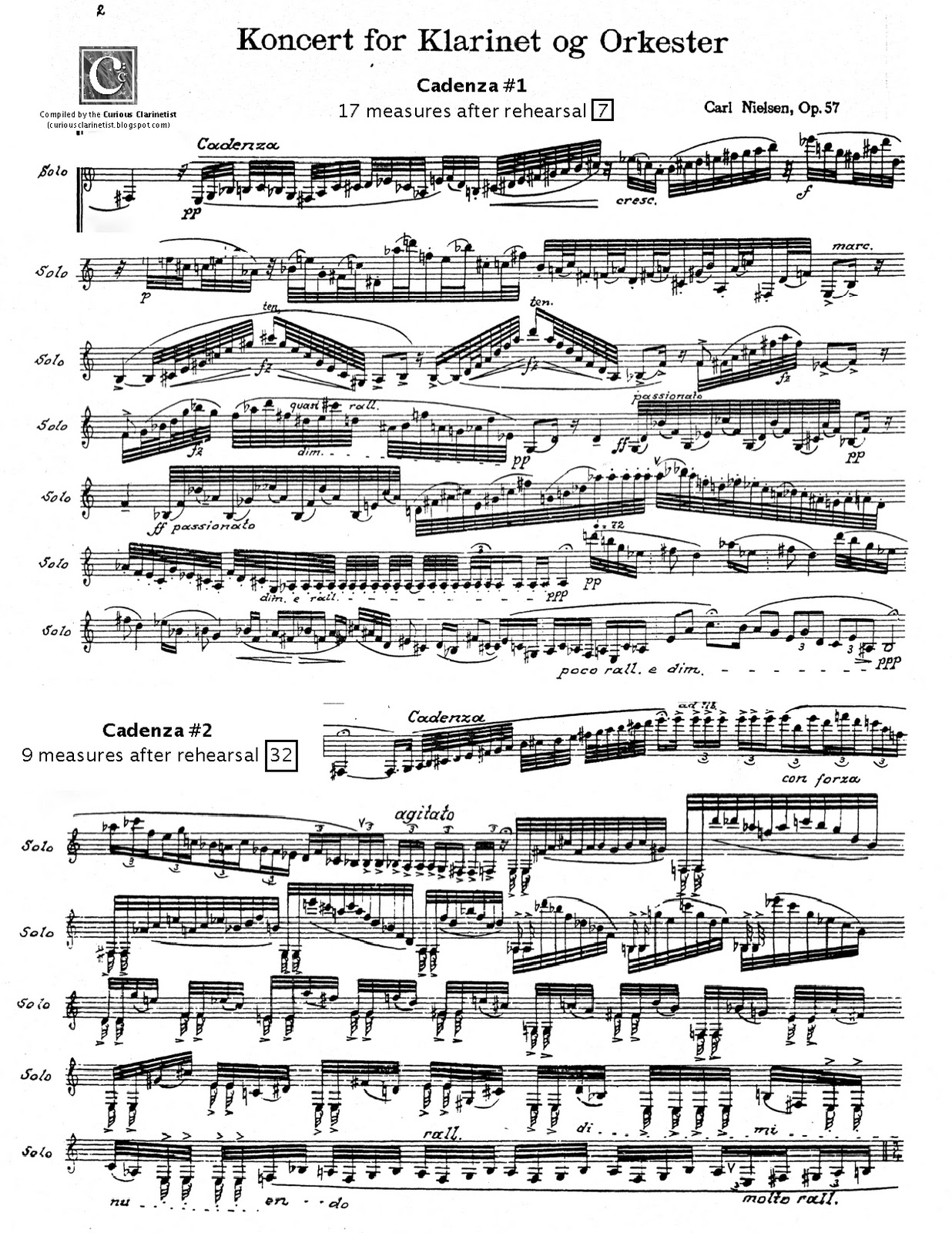Clarinet Concerto Pdf
ORCHESTRAL EXCERPTS FOR CLARINET. A collection of authentic parts in the public domain of audition excerpts for clarinet. Download PDF.
URTEXT EDITION This 'urtext' or 'scholarly' (scientific) edition was published at least 25 years ago in the EU (or 20 years ago in Italy, before 1992 in the former USSR). Hence, the edition is in its country of origin or a government publication. Such editions are also in Canada because they fail to meet the minimum 'threshold of originality' to qualify for copyright as an 'adaptation'.
They may not be elsewhere. More information about this can be found. Please obey the copyright laws of your country. IMSLP does not assume any sort of legal responsibility or liability for the consequences of downloading files that are not in the public domain in your country. Work Title Clarinet Concerto No.1 Alt ernative.
Title Composer Opus/Catalogue Number Op./Cat. Op.73; J.114 I-Catalogue Number I-Cat. ICW 10 Key F minor Movements/Sections Mov'ts/Sec's 3 movements: • Allegro (F minor) • Adagio ma non troppo (C major) • Rondo. Allegretto (F major) Year/Date of Composition Y/D of Comp. 1811 First Pub lication. 1823 - Leipzig:, Plate 1540. Dedication Average Duration Avg.
Duration 20 minutes Composer Time Period Comp. Period Piece Style Instrumentation Solo: clarinet Orchestra: 2 flutes, 2 oboes, 2 bassoons, 3 horns, 2 trumpets, timpani, strings Discography Authorities External Links.
Contents • • • • • • • • History [ ] As there is no autograph for this concerto and as it was published posthumously, it is difficult to understand all of Mozart's intentions. [ ] The only relic of this concerto written in Mozart's hand is an excerpt of an earlier rendition of the concerto written for in G (K.
[ ] This excerpt is nearly identical to the corresponding section in the published version for A clarinet. [ ] Mozart originally intended the piece to be written for basset horn, as Anton Stadler was also a virtuoso basset horn player, but eventually was convinced the piece would be more effective for clarinet.
[ ] However, several notes throughout the piece go beyond the conventional range of the A clarinet; Mozart may have intended the piece to be played on the, a special clarinet championed by Stadler that had a range down to low (written) C, instead of stopping at (written) E as standard clarinets do. Even in Mozart's day, the basset clarinet was a rare, custom-made instrument, so when the piece was published posthumously, a new version was arranged with the low notes to regular range. [ ] This has proven a problematic decision, as the autograph no longer exists, having been by Stadler, and until the mid 20th century did not know that the only version of the concerto written by Mozart's hand had not been heard since Stadler's lifetime. Attempts were made to reconstruct the original version, and new basset clarinets have been built for the specific purpose of performing Mozart's concerto.
Music [ ] The modern scoring of the work is for solo, two, two, two (in A and D, often transcribed for horns in F), [ ]. Audio files of Mozart's Clarinet Concerto. It soon transforms into a flurry of sixteenth notes in descending, played by the violins and flutes while the lower instruments drive the piece forward. After the, the strings begin a series of before the first closing theme, featuring dueling violin I's and violin II's, enters. The second closing theme is much more subtle until the of its final two bars. As the soloist enters, the clarinet repeats the opening theme with the expected added ornamentation.

As the orchestra restates the main theme, the clarinet traverses the whole range of the instrument with several flourishes. The secondary theme begins in the, and eventually tonicizes C major before arriving in the, E major. At the end of the E-major section, there is a short pause, where the soloist conventionally improvises a short (cadenza), although no context is offered for a true cadenza. The canonic material of the opening ritornello returns, this time involving the clarinet and leads to the novel feature of the soloist accompanying the orchestra with an over the first closing theme. The orchestral ritornello returns, ending with the second closing theme. The explores a few new key areas including F ♯ minor and D major, and even has some hints of the Baroque. Before the formal orchestral ritornello leading into the, Mozart writes a series of descending sequences with the cellos and bassoons holding over strings.
However report a problem you have had with any individual software listed here and we will delete it promptly. We are merely a software download directory and search engine of shareware, freeware programs available on the Internet. Catalyst ex software. Rocket Download is not responsible for any problems that may occur from downloading or installing software that listed here.